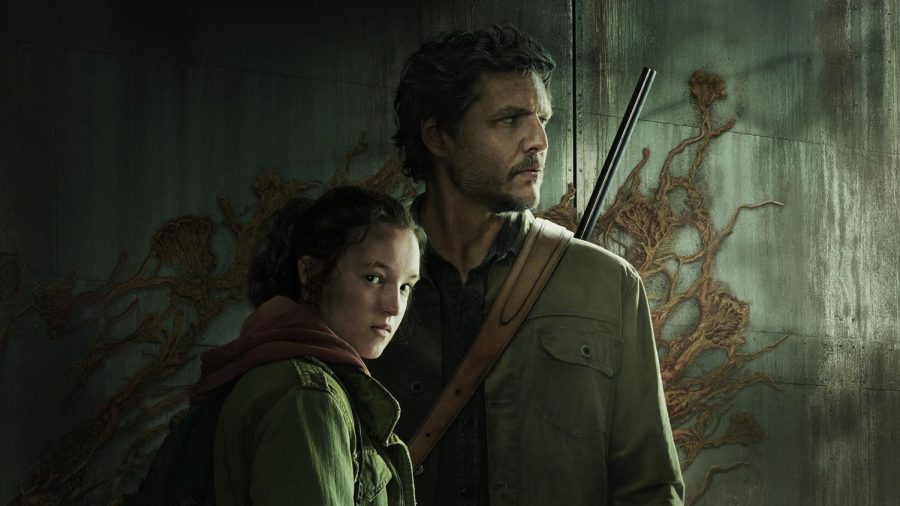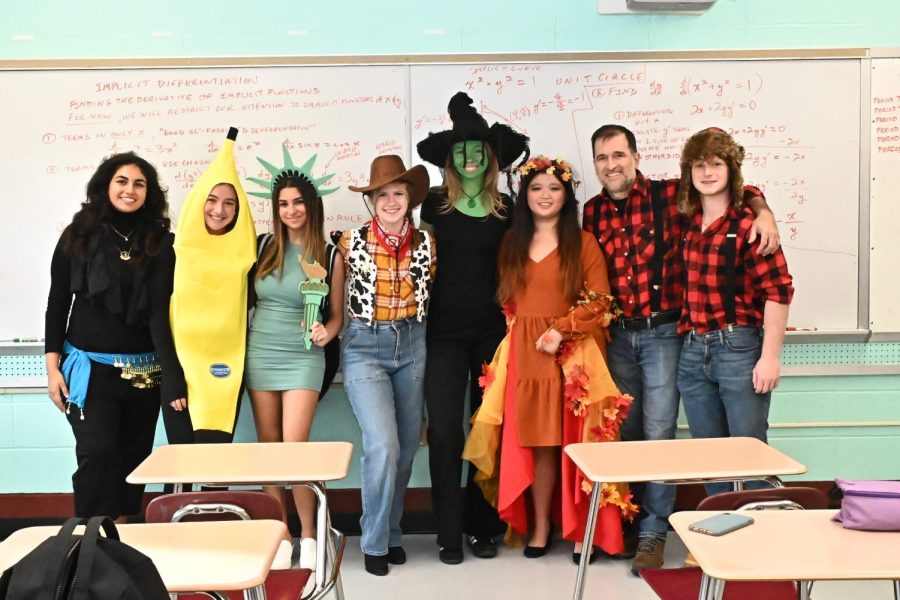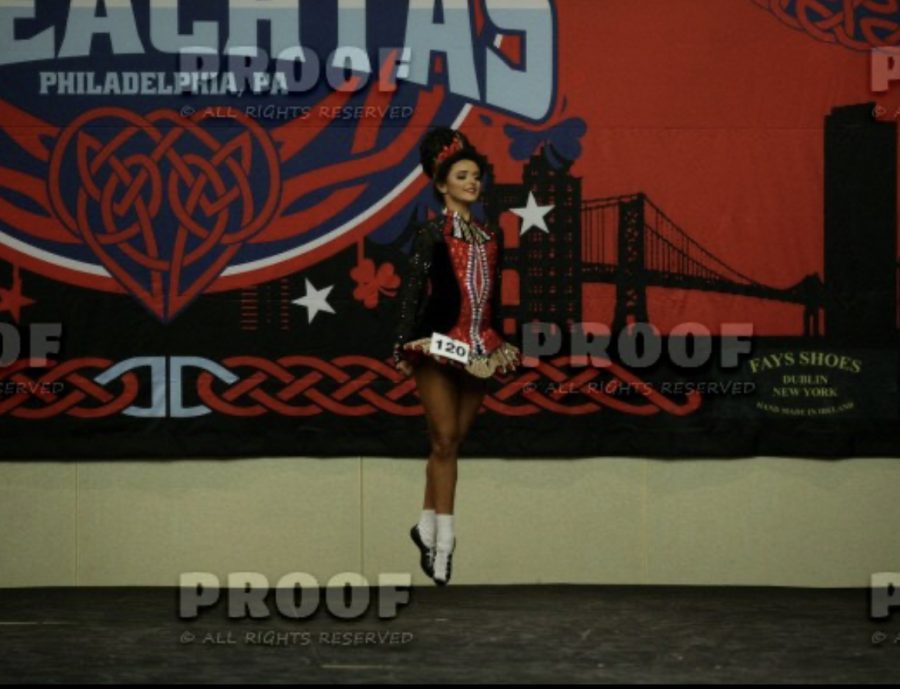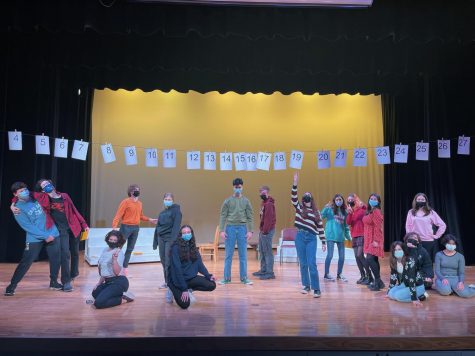WandaVision: When Nothing is Everything
Warning: the following contains massive spoilers for Marvel’s WandaVision, as well as Avengers: Age of Ultron, Avengers: Infinity War, and Avengers: Endgame.
I hate sitcoms.
That’s not a particularly popular opinion, and most certainly not in 2021. The sitcom has greatly evolved from its initial form in the 1950s, in which Nice White Couples — starring a white-collar husband and a glamorous homemaker wife — got into wacky hijinks with their Nice White Friends and Nice White Children, all to be resolved in a scant twenty-two minutes, give or take a few. The modern sitcom is stranger, darker, nastier, and more diverse than its predecessors, and reigns supreme as a palatable form of cultural commentary for the reasonably well-off to take in, chew on for a day or two, and promptly move on with their lives: think The Office, Parks and Recreation, Modern Family, Silicon Valley. Michael Scott and Lesley Knope now reign supreme in a television landscape where characters ought to be relatable and “real,” but not to an uncomfortable extent. They’re just off-kilter enough to be believable as characters, not real people — and just like in the sitcoms of yore, no matter how tangled their multi-season arcs become, it’ll all work out at the end of the episode, or perhaps season. This sort of cookie-cutter “It’ll be fine at the end” narrative is what turns me off to the sitcom, especially as modern sitcoms attempt to tackle the real-life workplace; it’s both too much and not enough, in which the issues at hand are just real enough to be genuinely stressful to the viewer, and just wacky enough that there’s no possible way to take the scenario seriously (“The Dinner Party” from The Office is a prime example). The modern sitcom strives for a light-hearted balance between reality and absurdity, and (in my personal, unpopular estimation), fails at both of its stated goals. These shows are like overdone coffee, bitter to the taste and hot to the tongue, just scorched and seared enough that even if it’s possible to drink, it’s deeply unpleasant to do so.
Enter WandaVision, Marvel Studios’s quirky, idiosyncratic take on the now ubiquitous sitcom. To call WandaVision different from other Marvel properties is a comic understatement. Not only is it Marvel Studios’s first live-action television series starring its iconic movie characters, it’s also its first true character study, a nine episode exploration of title character Wanda Maximoff’s grief, depression, and trauma.
“Wait!” says the uninitiated viewer. “‘Grief, depression, and trauma?’ Those aren’t words I associate with Marvel movies!”
This is indeed correct, and what makes WandaVision not only Marvel’s strangest, but also its most profound property to date. WandaVision is set just three weeks after Avengers: Endgame, and the wounds left from Endgame are still fresh in everyone’s minds. The “blip” — the nickname for villain Thanos’s “snap heard round the universe,” when half of all sentient life was simply erased from existence — has just been reversed, and its victims have returned to Earth. Five years of half the population missing and suddenly reappearing has upset the planet’s fragile post-blip balance, and it’s unquestionable that in the scramble to reorganize and rejuvenate society, more than a few individuals will slip through the cracks.
Enter Wanda Maximoff into “reverse blip” Earth, freshly returned from helping the Avengers defeat Thanos and save the universe. Even before the events of Avengers: Infinity War and Endgame, Wanda’s suffered a bit more than the majority of the cast. Orphaned as a child along with her twin brother, Pietro, in the fictional eastern European country of Sokovia when a bomb falls on her apartment, she’s taken into the folds of Hydra, a quasi-Nazi organization seeking to use her natural capacity for magic to rule the world. Hydra does so by experimenting on Wanda with the Mind Stone, one of the six infinitely powerful macguffins fittingly called the Infinity Stones, and which grants Wanda the power to change reality itself. She’s sent along with her brother to exterminate the Avengers during Avengers: Age of Ultron, but after learning that doing so will also end all life on Earth (as is so casually a threat in the MCU), Wanda and Pietro switch sides and help the Avengers save the day. Doing so doesn’t come without a price, though. During the final battle against Ultron and his robot army, Pietro — in an attempt to save a bystander left on the battlefield — gets turned into bloody swiss cheese by a bullet shower, and dies in excruciating pain apart from his sister.
All of this would certainly amount to a heavy dose of deep trauma for any individual, but Wanda’s turn at fortune’s wheel seems uniquely stacked against her: almost as soon as she’s able to retreat from heroics and live a quiet life with her robot-human-infinity-stone-made-sentient-lover Vision, Thanos attacks. Since Vision is now the living incarnate of the Mind Stone, it’s up to him to determine how to keep it out of Thanos’s hands. With a set of impossible odds before him to overcome, Vision decides that the only way forward is for Wanda to destroy the Mind Stone with her power — a move that will kill Vision, too. Wanda agrees, and in one of Infinity War’s most brutal scenes, destroys the Mind Stone, and Vision along with it. Just as it seems that the Avengers have succeeded in stopping Thanos from obtaining the last Infinity Stone, though, the Mad Titan — now in possession of the Time Stone — pulls a dirty trick, and travels back in time before Wanda destroyed the Mind Stone — and in front of her very eyes, Thanos rips the Mind Stone out of Vision’s head, leaving Wanda to cradle Vision’s broken body in her arms as she’s turned to dust by Thanos’s snap.
Parents, brother, lover: all those Wanda’s held dear are now dead, and this is where we find her at the start of WandaVision, once Thanos has been defeated and Wanda’s back on Earth. There’s no longer any villain out to destroy the universe, and there’s no great internal struggle between Earth’s superheroes; there is merely humankind struggling to regain its footing after suffering the collective trauma of Thanos’s snap, and one grieving woman with the power to alter reality left to her own devices. This should be Wanda’s time to finally quit fighting, to sit back and process the loss she’s incurred without the overhanging threat of universal annihilation. And in a sense, this is exactly what she does. Unable to bear the pain of existing in a world where her loved ones are all beneath the dirt, and unable to speak to anyone about her loss (Wanda’s only other friend on the Avengers team, Natasha Romanoff, also cruelly bites the dust in Endgame), Wanda retreats into her interior desires, a world in which Vision never died; a world in which Wanda Maximoff never became a terrorist or a villain or a “witch;” a world in which she and Vision can live happily ever after in the suburbs as just another couple on the block with some magic secrets to hide; and a world in which the worst thing she has to worry about is losing the neighborhood queen bee’s favor or Vision showing up with his boss at an inopportune time for dinner. Wanda, in short, wants a sitcom life — and with the power to alter reality, she turns her desperate dream into something very real, and very dangerous. On the spot in which she was supposed to build her house with Vision in the small New Jersey town of Westview, Wanda’s grief manifests in spectacular form as she enacts a reality barrier around the town, and turns everything in it — living and inanimate, organic and inorganic alike — into the set of her own sitcom television show, rewriting objects down to the atomic level and controlling the townspeoples’ minds such that they’re the extras in her new program, WandaVision — starring Wanda Maximoff and Vision, recreated from the piece of the Mind Stone Wanda holds within her.
That’s a good deal of backstory for what’s a show about absolutely nothing, for, after all, nothing in Wanda’s little world is real. It’s all a product of her powers working at a subconscious level, to the point that Wanda herself isn’t even aware that she’s living a lie. Only once little things in her sitcom start to go awry does Wanda realize that she’s actor, director, producer, writer, set designer, casting director, broadcast network, and creator all rolled into one, and here the delightful ambiguity of WandaVision takes hold. It’s difficult to hold Wanda accountable for her actions at first, for she herself doesn’t even know what’s happening. Once she does realize that she’s created the sitcom of her dreams, though — a sitcom in which no one has to suffer, where no one has to be in any pain beyond embarrassment or awkwardness, a sitcom that’s the manifestation of her deepest escapist fantasies come to life — she doesn’t want to give it up. The people of Westview suffer under her control: her nightmares are theirs, her grief is theirs to feel every second of their miserable, mind-controlled days. The quasi-governmental organization S.W.O.R.D. wants her dead: with her magic acting beyond her conscious thoughts, she’s a danger to everyone, including herself. Even Vision, endlessly loving, caring, compassionate Vision, the Vision of Wanda’s dreams, wants out: he doesn’t know who he is, for he’s not a meat-puppet like the rest of the town. He’s part infinity stone, and he’s able to determine on his own that he’s living a lie, even as he doesn’t have any of his memories from before.
Wanda, then, has a choice: release Westview from her control and let its people return to their lives, or keep up the ruse and let them suffer, while she lives out her sitcom fantasy life. Given the extent of Wanda’s trauma, it’s understandable that releasing the town isn’t something that she wants to do, even as she’s causing others immense pain. Moreover, the sitcom format isn’t random, but instead holds emotional weight for Wanda. It’s revealed that in her Cold War youth, Wanda and her family would watch illegally acquired American television shows before selling them on the black market, and her favorites were sitcoms like The Dick Van Dyke Show and I Love Lucy, and which WandaVision pays faithful homage to in its first three surreal episodes of Wanda’s own WandaVision. Television is Wanda’s great comfort, a constant in her life that’s kept her grounded in her darkest moments, from when she was Hydra’s pawn to when she was first forced to recover from Pietro’s death. For someone who’s endured nothing but loss and grief all her life, the sitcom’s blissful twenty-two minutes of wacky marriage hijinks are a salve to her mental wounds, a fantasy where physical injury is brushed off as easily as a fight between the Nice White Husband and his Nice White Wife; as Wanda herself puts it when Vision asks why a character on screen doesn’t get hurt from a patio falling in, “It’s not that kind of show.”
So, what kind of show is it? In a sitcom, every episode is its own little arc, in which something happens to confuse the characters, the characters deal with a problem, the characters solve the problem, and everything’s back to normal as the credits roll. This something-gets-bad-then-it’s-solved-and-it’s-fine-again format is what writer Kurt Vonnegut would have called a “Man in a Hole” story, where things are good, then bad, then good again; put on a graph of emotions to time, the sitcom would take the shape of a smiley face, with the upturned points the beginning and end of the episode, and the curve in the middle the part where things get bad, they hit a low, and things get better again. However, “Man in a Hole” doesn’t just apply to sitcoms; this good-bad-good shape is the story of the redemptive arc, where a character experiences a loss or a challenge that pushes them back, before working to overcome the challenge and redeem themselves to the audience. The redemptive story holds powerful appeal in the human mind, and especially for trauma survivors. In viewing the trauma as the “hole,” the survivor can visualize the way out as a return to normal life, a redemption for themself as they regain the parts of themselves lost to their once-shattered minds.
It’s no wonder, then, that Wanda chooses to live in the redemptive story, over and over and over again, to try and escape her loss. But, life isn’t as simply as a sitcom, in which it’s good, then bad, then good again. Life is messy and complicated, and it’s hard to tell if one’s truly “getting out of the hole.” WandaVision brilliantly tackles this issue as the show progresses and Wanda’s sitcom moves from the 1950s to the modern day: as the sitcom has tried to portray a more realistic and gritty life, so too do the cracks in Wanda’s facade become more and more apparent. Modern sitcoms don’t want to be The Honeymooners; they want to be Mad Men-lite, where real life is replicated faithfully, to a point. As Wanda’s stress increases from continuing to live the lie, she begins to lose control over Westview. 90s props shift to the 70s, then the 50s, then the modern day; Wanda herself retreats from her own TV show, instead opting to sit alone in her room and convince herself that everything is in fact fine, and that she can, in fact, control an entire town as long as she wants to. The sitcom fails, however, if the characters don’t want to stay in the rat race any longer — no one wants to watch Parks and Rec if Lesley isn’t ok with being tossed back and forth like a sack of potatoes by the writers. Wanda’s sitcom slowly breaks down into little more than a situation-sans-comedy, as she herself comes to terms with her depression, and the aching nihilism that tells her not even the ideal life is ever ideal. Wanda wants something beyond the sitcom now, where she has more authority, more depth and choice — but she can’t allow herself to have it, and admit that her sitcom prison is a failure.
Such, then, are the conditions of WandaVision’s final two episodes. Wanda, a burnt out, exhausted wreck, barely keeping it together in front of her own cameras; S.W.O.R.D., closing in for the kill; Vision, against Wanda. In the midst of all of this, someone new appears: Agatha Harkness, a witch who was drawn to the incredible power of Wanda’s magic prison. She seeks to steal Wanda’s power for herself, and she’s been masquerading the whole time as the nosy-neighbor character “Agnes.” One might at first be tempted to label Agatha the “real villain,” but that’s not accurate; Agatha might now be an antagonist to Wanda, but she wasn’t the one who created the reality prison. It’s been Wanda all the way down, and Agatha — in forcing Wanda to relieve her trauma such that Agatha can determine why Wanda’s so powerful — is merely the final straw on the camel’s back, the last ingredient necessary for this fragile world to finally crumble. Agatha is shocked by Wanda’s power, and eventually determines that Wanda isn’t any ordinary magically endowed human. Wanda is the Scarlet Witch, a being “created, not born,” who’s stronger than the Sorcerer Supreme, who’s destined to supposedly bring about the end of the world — and the catalyst for the Scarlet Witch’s birth was Wanda’s repeated, severe trauma.
No one can control the Scarlet Witch, for she’s chaos incarnate. Fittingly, the chaos accompanying the Scarlet Witch’s reveal also ups the ambiguity in the series finale. Up till now, Wanda’s been an antihero, whose motives are sympathetic even if her actions aren’t justified. Now, though, Wanda’s own nihilism has literally manifested itself as unrestrained chaos, and both Wanda and the audience now question what it was all for. Wanda might have tremendous power, but she doesn’t want it; all she wants is a safe home and a stable family, a quiet life away from pain. There’s nothing triumphant about the Scarlet Witch, for there’s nothing triumphant about Wanda’s trauma and loss, and the severe depression, the “waves of nothingness,” it’s endowed her with. The Scarlet Witch simply is, a being who exists purely of circumstance and chance, the diametric opposite to the carefully controlled world of the sitcom and its comfortable “Man in a Hole” world. Even as Wanda uses her newly realized chaos power to defeat Agatha and free all of Westview, we can’t help but believe her as she fires off energy blasts for Agatha to absorb, screaming at her, “Take it! I don’t want it!” There’s nothing to want about being Scarlet Witch, and Wanda’s the first person who knows it.
Wanda might not be the most admirable character in the MCU, but she’s not a villain. Once the battle with Agatha ends, Wanda tucks her WandaVision children into bed one last time, and waits hand in hand with Vision for her reality barrier to finally wash over them, and take her family with it. When the dust settles and the barrier’s destroyed, all that’s left is Wanda standing in the same empty lot from which her powers first exploded out from, put right back at the beginning of the entire absurd, aimless saga. Wanda created her reality prison, and Wanda destroyed it; Wanda created a family, and had to leave it behind. She might be different now, as she’s awakened as the Scarlet Witch, but her grief hasn’t gone anywhere — and given the collective suffering she’s inflicted on the people of Westview, her guilt and pain has only gotten worse. As Wanda flies off into the night, away from Westview and away from her fantasy life, the audience must question what it’s all been for, whether there was a purpose to any of it, any of the pain, any of the never-ending nightmares. We’re back where we started. WandaVision is, quite simply, pointless.
And yet, in spelling a saga out of nothing, WandaVision not only breaks down the sitcom format from the inside out, but ascends to a higher plane of story-telling. Of all of Vonnegut’s story shapes, the most elusive of the bunch is “Which Way Is Up?” In this story structure, the plot is so ambiguous in its emotional ups and downs that we don’t know whether anything happening is “good” or “bad.” The story oscillates to nowhere, and at its end we question what it was all for; Hamlet is probably the best example of such a story, and the work of Franz Kafka also comes to mind. But, “high literature” isn’t the only place we’ve ever seen “Which Way Is Up?” One of the most famous sitcoms of all time is an example of this: Seinfeld, the “show about nothing.”
Seinfeld follows a group of four horrible people who get into extremely mundane scenarios and come out exactly the same as before. Jerry, George, Kramer, and Elaine never grow as people, never experience the sort of sickeningly saccharine character “arcs” so common on modern sitcoms. Nothing is good or bad on Seinfeld. Seinfeld just is, a story that goes to nowhere,an only moderately exaggerated portrait of real life, in all its roads to aimlessness, its twists and turns where nothing ever truly happens. Seinfeld is a circle and a wave, bringing us back to the beginning and off to infinity all at the same time, as our characters never change, and there’s no great watershed where everything is Now Different. No one gets married, no one has a baby, no one becomes president. There’s nothing more than four lonely, selfish adults who do lonely, selfish things, (marble rye, anyone?) and we can’t get enough of it.
WandaVision is certainly more theatrical than Seinfeld, and at first the two have next to nothing in common — you won’t see a chaos magic showdown on Seinfeld any more than you’d see something like “The Contest” on the faithfully PG-13 WandaVision. But, both shows are sitcoms that lead to nowhere, where our protagonist doesn’t change but merely rides the waves of life, sometimes making good choices, sometimes making bad choices, sometimes helping others, sometimes causing immense pain and suffering. WandaVision is a much darker show than Seinfeld (no one’s talking about Jerry’s dead parents and dead siblings and dead lover), but it shares in Seinfeld’s cynical wit and searing portrait of its characters. Wanda isn’t “good” or “bad,” and her trauma isn’t to be romanticized or demonized. Wanda’s inescapably human, even if she’s now the most powerful witch in existence, and in emphasizing the existentialism of Wanda’s story, WandaVision brings to life a character with more depth and grace than anyone else in the MCU. Wanda may have wanted a sitcom life, but in the end, she’s stuck with life, no laugh track or cameras to accompany it. WandaVision, then, is the ideal sitcom, in line with Seinfeld in terms of its faithful portrayal of life as a “Which Way Is Up?” story until the clock runs out, and we flick the television off.
So, allow me to amend my previous statement. I still hate sitcoms, but not because they portray life faithfully. Modern sitcoms force a redemptive arc that humans so easily fall into organizing their own lives around, and these forced arcs cause sitcoms to lose out on the “situation” part of their “situation-comedy,” if the situation in question is ordinary life. I don’t hate those sitcoms that accept their situations as mundane and their comedy as absurd, though: Seinfeld, Curb Your Enthusiasm, It’s Always Sunny in Philadelphia, even The Simpsons and Family Guy. WandaVision is the sitcom to rule all sitcoms, an examination of grief, trauma, depression, and nihilism that’s just witty enough to not take itself too seriously, and just hopeful enough that it still gives Wanda a chance to at least partially recover from her trama; she’s very much alive at the end of the story, and more powerful than ever. WandaVision, though, doesn’t truly end. Much like its episodic format, it’s merely one chapter, one episode in Wanda Maximoff’s potholed highway of a life, and Wanda’s already set to appear as a major character in the upcoming Dr. Strange and the Multiverse of Madness. WandaVision is the necessary bridge between the Wanda past and the Scarlet Witch future, in which we observe the ordinary life for a profoundly un-ordinary person, at least in terms of her magic powers. As a character, however, Wanda Maximoff is all of us, one individual attempting to find her way in the turbulent, oft violent seas of life on Earth. Her struggle is our collective struggle, her grief our collective grief in what’s been a time of immense loss and hardship. She’s within us all — all we have to do is find her.












